by Lorri | Mar 24, 2010 | UnCorked
 It’s that time of year when I round out another year of UnCorked columns and a lengthy list of value and splurge wine recommendations. My goal continues to be to offer honest recommendations of wines available in Arkansas. But possibly more than the specific recommendations, I hope this column makes wine — an often pretentious and confusing subject — more enjoyable and easier to understand.
It’s that time of year when I round out another year of UnCorked columns and a lengthy list of value and splurge wine recommendations. My goal continues to be to offer honest recommendations of wines available in Arkansas. But possibly more than the specific recommendations, I hope this column makes wine — an often pretentious and confusing subject — more enjoyable and easier to understand.
Over the past year many of my column ideas were from questions and feedback from readers. Keep the suggestions coming, as they only make UnCorked more relevant, with valuable information you want to read.
If you would like to receive a list of the past year’s Value and Splurge recommendations (the list makes it easy to keep on your computer or for a quick print to have on hand for an easy reference), click here.
A few favorites:
THE VALUES
- 2007 Lindemans Bin 77 Semillon-Chardonnay, Australia (about $9 retail)
- 2007 337 Cabernet Sauvignon, California (about $15 retail)
- 2008 Cupcake Sauvignon Blanc, New Zealand (about $10 retail)
- 2007 Concha y Toro Casillero del Diablo Cabernet Sauvignon, Chile (about $12 retail)
- 2007 Cellar No. 8 Zinfandel, California (about $12 retail)
- 2008 Oyster Bay Sauvignon Blanc, New Zealand (about $15 retail)
- 2006 Paul Jaboulet Aine Parallele 45 Cotes du Rhone, France (about $14 retail)
- 2007 Renwood Sierra Foothills Zinfandel, California (about $12 retail)
THE SPLURGES
- 2008 Honig Sauvignon Blanc, California (about $18 retail)
- 2007 Turkey Flat Vineyards Rose, Australia (about $22 retail)
- 2005 Bell Big Guy Red, California (about $25 retail)
- 2008 Pacific Rim Organic Riesling, California (about $20 retail)
- 2008 Spy Valley Sauvignon Blanc, New Zealand (about $18 retail)
- 2008 Anne Amie Pinot Gris, Oregon (about $19 retail)
- 2007 Pascal Jolivet Attitude, France (about $22 retail)
- 2007 Honig Napa Cabernet Sauvignon, California (about $44 retail)
by Lorri | Mar 17, 2010 | UnCorked
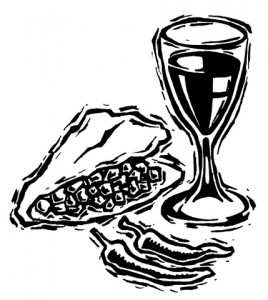 When you think of pairing your favorite Mexican dish with a beverage, most think of beer rather than wine.
When you think of pairing your favorite Mexican dish with a beverage, most think of beer rather than wine.
It’s not that wine and Mexican food are at odds, it’s just that fashionable varietals such as cabernet sauvignon and chardonnay often come to mind first and are not good partners. Big full-bodied cabernets and other tannic reds usually clash because the large amount of tannins can exaggerate the food’s spiciness instead of soothing the palate. Oaked chardonnays can also clash because the oaky flavors often taste bitter and harsh when paired with Mexican fare.
But there are plenty of matches that work well with the spicy, bold flavors of Mexican dishes.
When selecting a wine to serve with Mexican food, start with the sauce. Whether hot and spicy or cool and refreshing, the sauce defines most of the classics of Mexican cuisine. This approach of pairing wine with the sauce and not the meat, poultry or fish in the dish offers a range of versatile pairings.
Cool and refreshing such as green tomatillo-chile sauce: Albarino or sauvignon blanc
Hot and spicy such as red chile adobo sauce: zinfandel or shiraz
THE VALUE
- 2008 Oyster Bay Sauvignon Blanc, New Zealand (about $13 retail)
THE SPLURGE
- 2008 Bonny Doon Ca’del Solo Albarino, California (about $25 retail)
The taco can be filled with practically any meat, fish, vegetable or other filling, which allows for much versatility and wine pairing. Unless the taco’s dominant flavor comes from a sauce, consider the filling.
Seafood: pinot grigio, Riesling or sauvignon blanc
Beef: pinot noir, sangiovese or malbec
Chicken: pinot noir, merlot or sangiovese
Pork: sangiovese or tempranillo
THE VALUE
- 2007 Angeline Pinot Noir, California (about $15 retail)
THE SPLURGE
- 2008 Tohu Marlborough Pinot Noir, New Zealand (about $28 retail)
Rich cheese-filled enchiladas, burritos or Mexican dishes topped with heavy sauces: chianti, zinfandel, Riesling or malbec
THE VALUE
- 2007 Banfi Chianti Classico, Italy (about $15 retail)
THE SPLURGE
- 2007 Kunde Estate Reserve Zinfandel, California (about $32 retail)
by Lorri | Mar 14, 2010 | Annual Reviews
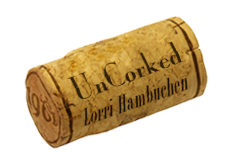 It’s that time of year when I round out another 12 months of UnCorked columns and a lengthy list of Value & Splurge wine recommendations. My aim continues to be offering honest recommendations of wines available to you in your market. But possibly more than the specific recommendations, I hope this column makes wine — an often pretentious and confusing subject — more of a relaxing topic and easier to understand.
It’s that time of year when I round out another 12 months of UnCorked columns and a lengthy list of Value & Splurge wine recommendations. My aim continues to be offering honest recommendations of wines available to you in your market. But possibly more than the specific recommendations, I hope this column makes wine — an often pretentious and confusing subject — more of a relaxing topic and easier to understand.
In the past year many of my column ideas were from questions and feedback from you the reader – keep the suggestions coming it only makes UnCorked more relevant with valuable information you want to read.
As I do each year, if you would like a listing of the past year’s Value & Splurge wines – they are ready for your reference. The list makes it easy to keep on your computer or for a quick print to have on hand for an easy reference.
UnCorked | 2009 Wine Review
by Lorri | Mar 10, 2010 | UnCorked
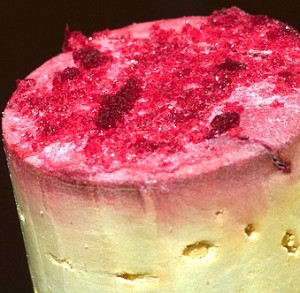 Finding what appears to be small glass shavings in your wine bottle may not only be confusing but also scary. The good news is that there is no reason for panic because these small crystals are not dangerous and more of a distraction than anything.
Finding what appears to be small glass shavings in your wine bottle may not only be confusing but also scary. The good news is that there is no reason for panic because these small crystals are not dangerous and more of a distraction than anything.
The crystals are caused by tartaric acid and potassium binding together when a wine is chilled. These crystals are clear and look like rock candy or snowflakes on the bottom of the cork. If they dislodge from the cork, they can look like shards of glass in your wine. They are entirely natural and completely harmless, nothing more than a type of sediment.
Most winemakers use a process called cold stabilization to prevent the crystals from forming at your dinner table. Before bottling, the winemaker will chill the wine to near freezing, which causes the crystals to form so they can be removed. Cold stabilization is generally used only on white and blush wines — not because red wines do not form the crystals but because they are rarely chilled low enough to allow the crystals to form.
The crystals, like any other wine sediment, can be removed by decantation. Stand the bottle upright for a few hours to let the crystals settle in the bottom, then slowly pour the wine into a decanter.
by Lorri | Mar 3, 2010 | UnCorked
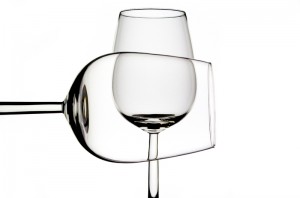 Snubbed almost as often as white zinfandel, Riesling may be the most underappreciated white grape in the world. Is it because of the continued misunderstood image that all Riesling is sweet, the cumbersome confusing labels or could it be as simple as the fact that few people have explored the surprising and racy crispness of dry Rieslings?
Snubbed almost as often as white zinfandel, Riesling may be the most underappreciated white grape in the world. Is it because of the continued misunderstood image that all Riesling is sweet, the cumbersome confusing labels or could it be as simple as the fact that few people have explored the surprising and racy crispness of dry Rieslings?
Over the past 10 years the production of dry Riesling has increased significantly, not only in Germany but the rest of the world. As more wine consumers set out exploring a gamut of taste, flavors and colors they continue searching out dry styles versus sweet. Chefs and sommeliers have been onto this refreshing style for years, adding this versatile food friendly grape to wine lists around the world.
When it comes to Riesling, German labels are notorious for being confusing and intimidating because of the unfamiliar wording. So when searching out dry versions rather than sweet, start by looking for two key words, Trocken (literally translated “dry” in German) or Halbtrocken (“half dry”). Also, keep in mind the label confusion is usually caused by German ripeness classifications, so look for wines labeled Kabinett, which are made from the leastripe grapes, producing wines that are generally light-bodied, lower in alcohol and made in a drier style.
THE VALUES
- 2008 Bonny Doon Pacific Rim Riesling, California (about $13 retail)
- 2008 Chateau Ste. Michelle, Johannisberg Riesling, Washington (about $13 retail)
- 2008 Rudi Wiest Riesling, Germany (about $12 retail)
- 2008 Cupcake Dry Riesling, California (about $10 retail)
- 2008 Snoqualmie Naked Riesling, Washington (about $13 retail)
THE SPLURGES
- 2008 Pfeffingen Dry Riesling, Germany (about $18 retail)
- 2008 Hugel Riesling, France (about $24 retail)
- 2007 Spy Valley Riesling, New Zealand (about $24 retail)
- 2008 Francis Coppola Sofia Riesling, California (about $24 retail)
by Lorri | Feb 24, 2010 | UnCorked
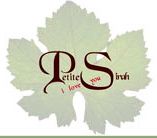 It seems reasonable that a grape named “petite” would be soft, dainty and a bit on the light side. Petite sirah is anything but, with its robust, spicy and full-bodied taste. Not only is the name misleading but variations in spelling (petit sirah, petite syrah, or petit syrah) add to the confusion.
It seems reasonable that a grape named “petite” would be soft, dainty and a bit on the light side. Petite sirah is anything but, with its robust, spicy and full-bodied taste. Not only is the name misleading but variations in spelling (petit sirah, petite syrah, or petit syrah) add to the confusion.
The grape came to the wine world through France’s family tree — specifically the Rhone region. It is less familiar than the soughtafter international grape varieties such as cabernet sauvignon and pinot noir. It was originally known by the awkward moniker of “durif.” Dr. Francois Durif, a French nurseryman, developed the new variety in the 1870s. And by the 1960s unblended petite sirahs were being produced in California. Early vintners included Concannon, Stags Leap Winery, Ingelnook Napa Valley and Souverian.
For many years petite sirah was mainly used as a blending partner to California zinfandel. It added complexity and structure in a blend, toning down the sometimes “jammy” characters of zinfandel. No need for this grape to stay in the shadow as a blending partner anymore. The petite sirah has recently found its own following with fans and admirers looking to savor the taste of this unique grape.
THE VALUES
- 2007 Concannon Petite Sirah, California (about $15 retail)
- 2008 Big House Prodigal Son Petite Sirah, California (about $13 retail)
- 2007 McManis Vineyards Petite Sirah, California (about $14 retail)
THE SPLURGES
- 2007 Seghesio Home Ranch Petite Sirah , California (about $39 retail)
- 2007 Bell Winery Petite Sirah Masas Ranch, California (about $40 retail)
- 2007 Markham Petite Sirah, California (about $33 retail)
- 2007 Michael David Petite Sirah, California (about $25 retail)
- 2007 David Bruce Petite Sirah, California (about $22 retail)
 It’s that time of year when I round out another year of UnCorked columns and a lengthy list of value and splurge wine recommendations. My goal continues to be to offer honest recommendations of wines available in Arkansas. But possibly more than the specific recommendations, I hope this column makes wine — an often pretentious and confusing subject — more enjoyable and easier to understand.
It’s that time of year when I round out another year of UnCorked columns and a lengthy list of value and splurge wine recommendations. My goal continues to be to offer honest recommendations of wines available in Arkansas. But possibly more than the specific recommendations, I hope this column makes wine — an often pretentious and confusing subject — more enjoyable and easier to understand. When you think of pairing your favorite Mexican dish with a beverage, most think of beer rather than wine.
When you think of pairing your favorite Mexican dish with a beverage, most think of beer rather than wine.
 Finding what appears to be small glass shavings in your wine bottle may not only be confusing but also scary. The good news is that there is no reason for panic because these small crystals are not dangerous and more of a distraction than anything.
Finding what appears to be small glass shavings in your wine bottle may not only be confusing but also scary. The good news is that there is no reason for panic because these small crystals are not dangerous and more of a distraction than anything. Snubbed almost as often as white zinfandel, Riesling may be the most underappreciated white grape in the world. Is it because of the continued misunderstood image that all Riesling is sweet, the cumbersome confusing labels or could it be as simple as the fact that few people have explored the surprising and racy crispness of dry Rieslings?
Snubbed almost as often as white zinfandel, Riesling may be the most underappreciated white grape in the world. Is it because of the continued misunderstood image that all Riesling is sweet, the cumbersome confusing labels or could it be as simple as the fact that few people have explored the surprising and racy crispness of dry Rieslings?